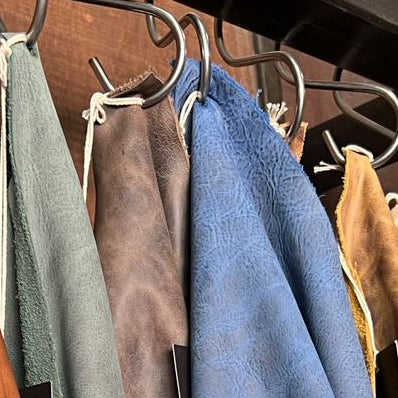
On Orders Over $149*
On Orders Over $149*
This Ultra Violet reactive leather will produce a glow on the paint splashes once exposed to a black light. Tanned in Mexico, these drum-dyed doubl...
View full detailsThis Ultra Violet reactive leather will produce a glow on the paint splashes once exposed to a black light. Tanned in Mexico, these drum-dyed doubl...
View full detailsThese sides have been embossed with an attractive Western pattern and then hand-painted to draw attention to any project made with it. These Chrome...
View full detailsThese sides have been embossed with an attractive Western pattern and then hand-painted to draw attention to any project made with it. These Chrome...
View full detailsSpecifications Weight/Thickness: 1.5 to 3.5 oz. (0.6 to 1.4 mm) Average Size: 18 to 22 sq. ft. (1.67 to 2.04 sq. meters) Tannage: Chrome
This three piece hatband buckle set features an eye-catching design to add a unique touch to your hat. Pair with our leather hatband strip. Specifi...
View full detailsThis three piece hatband buckle set features an eye-catching design to add a unique touch to your hat. Pair with our leather hatband strip. Specifi...
View full detailsThis three piece hatband buckle set features an eye-catching design to add a unique touch to your hat. Pair with our leather hatband strip. Specifi...
View full detailsThis three piece hatband buckle set features an eye-catching design to add a unique touch to your hat. Pair with our leather hatband strip. Specifi...
View full details